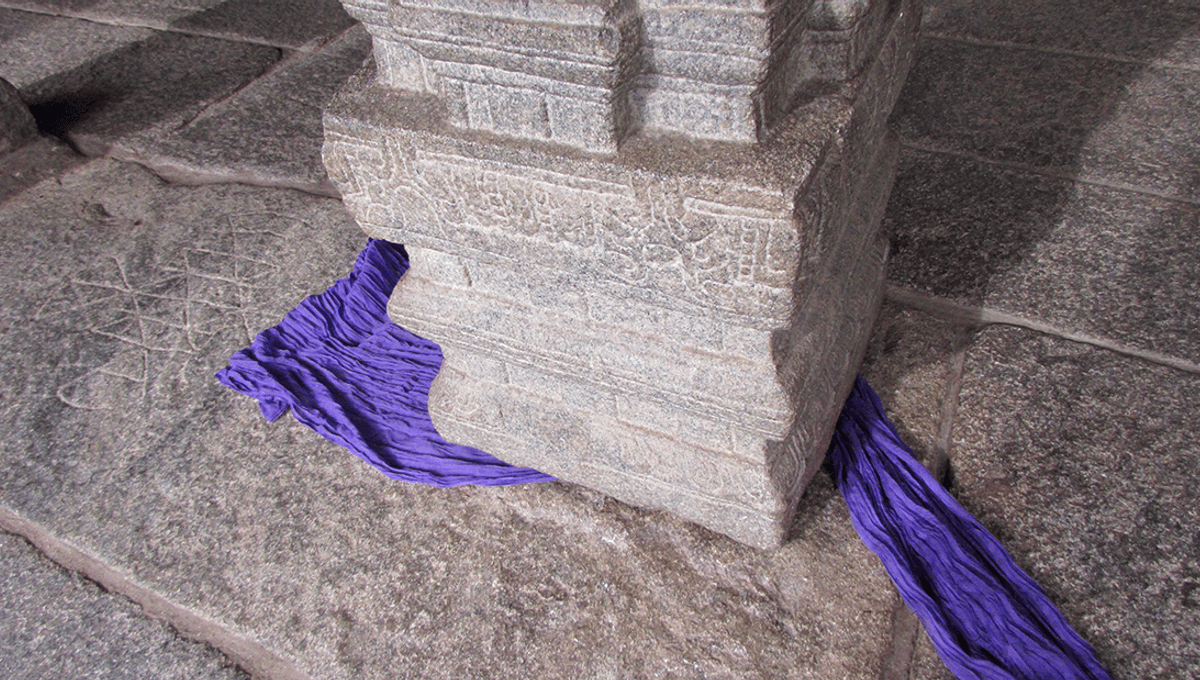
At the Veerabhadra Temple in Lepakshi, Andhra Pradesh, India, there are hundreds of ornate features, carved out in the 16th Century CE.
At the complex, as well as a monolithic bull (carved from one giant slab of granite) in the image of the Hindu god Shiva’s mount, there is one particular feature that draws the attention of tourists. One pillar among many appears not to touch the ground. Visitors attempt to pass thin pieces of cloth, paper, and other objects under the pillar, but as you can see below the stone does touch the ground on one corner.
The temple is so well-designed that legends have sprung up, crediting the architects with making it deliberately look like it was floating, and other legends stating that it was dislodged into its current resting position by a British engineer during the British Empire era.
“The architectural and ornamental elements such as sculptures; pillars of natya- mandapas elaborately carved with the figures of musicians, gods and goddess, and dancers portray a remarkable concentration of skills of 16th Century artists and crafts workers of South India,” UNESCO writes of the site.
“The unique sculptures of the temple, carved out of granite boulder like Nandi (monolithic bull) and Naga-sivalingaare significant for the use of material and its scale. The property thus bears a witness to human artistic and creative endeavors.”
However, it is unlikely that the pillar was made to rest only on one corner by design. Similar legends have sprung up about the Windsor Guildhall in England, which contains pillars that don’t quite make it up to the ceiling. There were rumors that architect and astronomer Sir Christopher Wren knew pillars were unnecessary for keeping the building up, but was forced by the council to place them there after they became concerned about building collapse.
According to the legend, Wren placed pillars there but defiantly left them a little short of the ceiling to prove an architectural point, or as a joke. However, they were likely not there in Wren’s day, and were merely placed there as a decorative feature in 1829.
Similarly, the pillar at Veerabhadra Temple was likely moved into its seemingly-floating position by seismic activity, or a mistake during construction.
Source Link: The Mystery Of The "Hanging Pillar" Of Veerabhadra Temple